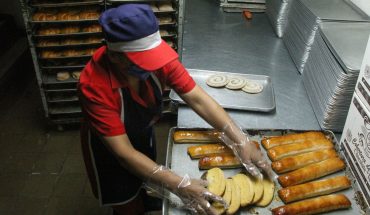Through the development of eight new products, including pastas, breads, infusions, edible and distilled coatings, the project “New commercial offer for the Quinoa del Secano” seeks to improve the c ompetitivity of Chilean quinoa in the domestic and international market, as well as diversifying the supply of processed products based on this noble food
Funded by the Innovation Fund for Competitiveness (FIC) of the O’Higgins region, the initiative is developed by researchers from QuinoaLab UC from the Faculty of Agronomy and Forestry Engineering, the Department of Chemical Engineering and Bioprocesses, and the Career in Nutrition and Dietetics of the Pontifical Catholic University.
The academic Francisco Fuentes has been developing research projects that have as their central objective the quinoa. It has received funding from various national and international agencies, including the Agricultural Innovation Foundation (FIA), competitiveinnovation innovation fund (FIC) from various regions and the United Nations Food and Agriculture (FAO).
Together with other academics belonging to QuinoaLab UC has managed to develop different jobs, such as studying the competitiveness of Chilean quinoa, understanding consumption habits and feeding trends based on quinoa, the development of varieties of quinoa and new food products.
“The low competitiveness of domestic production in the face of the large supply of imported grains that come mainly from Peru and Bolivia allowed us to develop applied research to first increase yields in the field, add value to the grains and leaves, achieving product differentiation and increasing competitiveness of local production at the commercial level, this meant creating new products and making them attractive,” he says.
New products
The project developed eight new products, all based on grains and quinoa leaves, such as pastas, breads, infusions, edible and distilled coatings such as whiskey and gin. To reach this production it was necessary to work interdisciplinaryly throughout the value chain of quinoa, from the management of cultivation in the field, the selection of machinery for the cleaning and selection of grains and leaves to obtain raw materials improve cooking and baking conditions, as well as assign new valuable attributes to the food industry.
In the industrialization process, the project involves the processing of quinoa grain for the production of flours with their proper chemical characterization and nutritional value.
Sebastián Tobar, UC Nutrition and DieteticS Teacher and part of the project, was responsible for testing and recipes from grains, flours and quinoa leaves, exploring in addition to food, some plant drinks with quinoa leaf.
“We use the powder of leaves to color and improve the nutritional contribution of various products and culinary preparations, the unground leaves for the development of infusions and salads, the clean grain for culinary recipes and various flours as matrices for the food generation,” he says.
Regional development
This initiative has been disseminated in gourmet and impulse fairs for SMEs and regional ventures, identifying opportunities to enhance heritage products.
In addition to producers, there was interaction with various indigenous associations, trade associations, cooperatives and individual farmers throughout the national territory.
For her part, the academic Wendy Franco has a long history in the study of quinoa from the view of the transformation of grains, flours and food matrices into food products made through biofermentative processes. Through this project, the researcher seeks to develop foods that are free of allergens, thinking of celiacs or lactose intolerant.
“The idea is to formulate fermented foods (bread, vegetable drinks like yogurt among others) initiated by bacteria isolated from the same quinoa. The production of quinoa sourdough bread has already been socialized in workshops with cooperatives that produce quinoa. The bread produced with this technology has been sensory evaluated and has had a very interesting acceptance in terms of the assessment of its bark, crumb and flavor”, he concludes.





